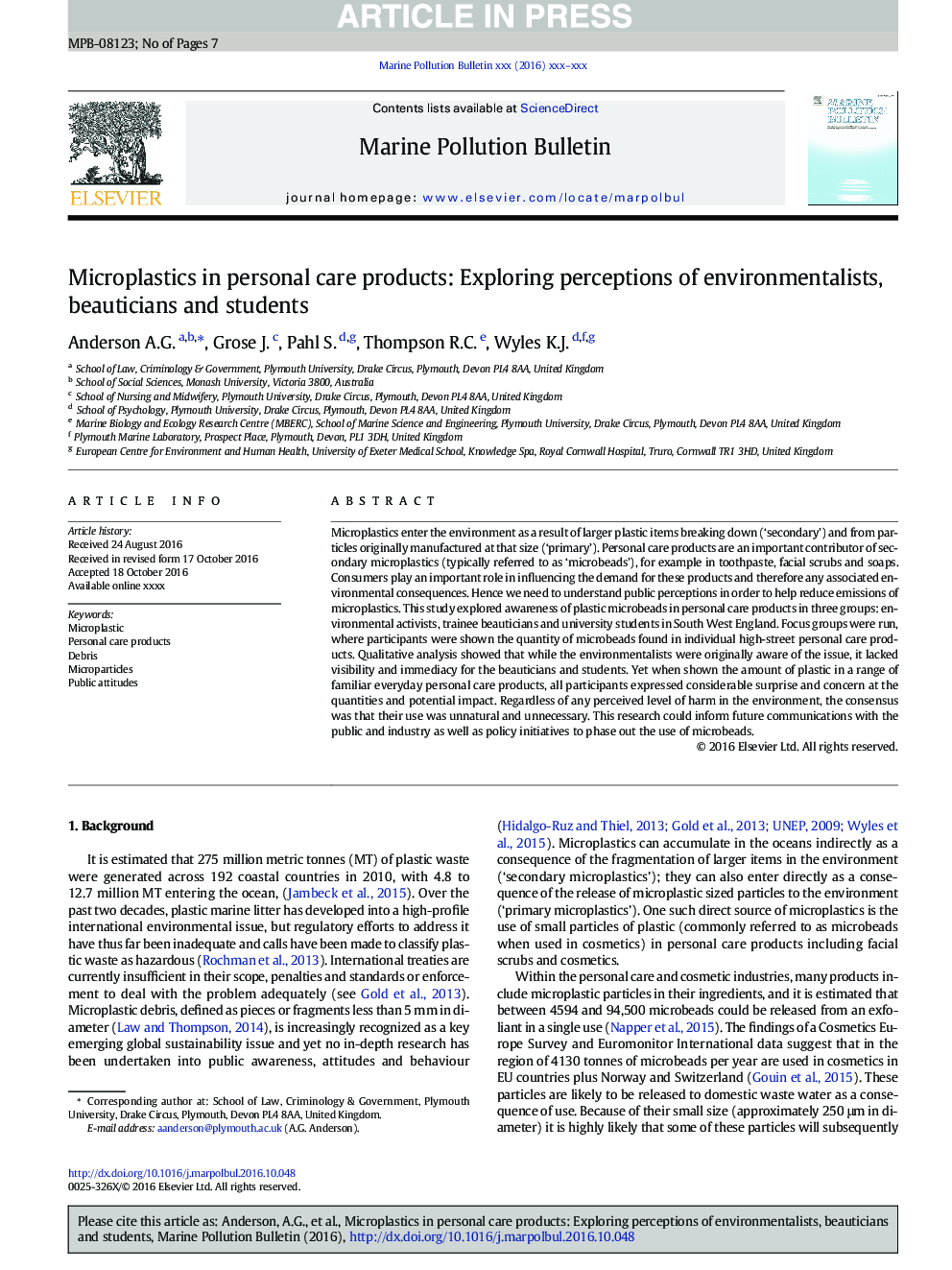| Article ID | Journal | Published Year | Pages | File Type |
|---|---|---|---|---|
| 5757895 | Marine Pollution Bulletin | 2016 | 7 Pages |
Abstract
Microplastics enter the environment as a result of larger plastic items breaking down ('secondary') and from particles originally manufactured at that size ('primary'). Personal care products are an important contributor of secondary microplastics (typically referred to as 'microbeads'), for example in toothpaste, facial scrubs and soaps. Consumers play an important role in influencing the demand for these products and therefore any associated environmental consequences. Hence we need to understand public perceptions in order to help reduce emissions of microplastics. This study explored awareness of plastic microbeads in personal care products in three groups: environmental activists, trainee beauticians and university students in South West England. Focus groups were run, where participants were shown the quantity of microbeads found in individual high-street personal care products. Qualitative analysis showed that while the environmentalists were originally aware of the issue, it lacked visibility and immediacy for the beauticians and students. Yet when shown the amount of plastic in a range of familiar everyday personal care products, all participants expressed considerable surprise and concern at the quantities and potential impact. Regardless of any perceived level of harm in the environment, the consensus was that their use was unnatural and unnecessary. This research could inform future communications with the public and industry as well as policy initiatives to phase out the use of microbeads.
Related Topics
Physical Sciences and Engineering
Earth and Planetary Sciences
Oceanography
Authors
Anderson A.G., Grose J., Pahl S., Thompson R.C., Wyles K.J.,
